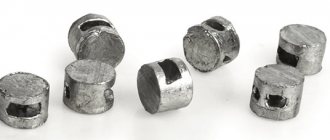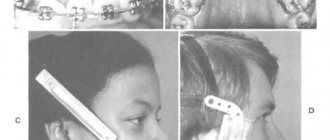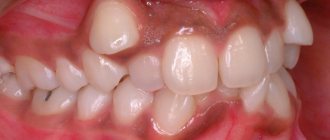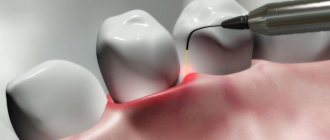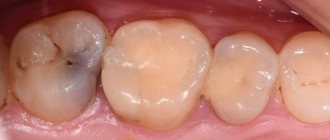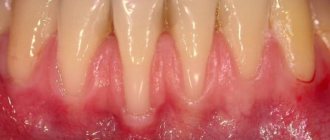Plastic surgery experts say that the perception of human appearance as beautiful depends 75% on the location and expressiveness of the cheekbones, the remaining 25% comes from the eyes, nose and lips, jawline and general skin condition.
If you can make your skin healthy with proper nutrition and well-chosen cosmetic care, then to change the structure of your cheekbones you will need more radical methods - plastic surgery. But you can correct the natural shape with the help of makeup and gymnastic exercises.
What are cheekbones and where are they located?
In anatomy, cheekbones are defined as the part of the bone that stands out below the eyes. Due to the presence of cheekbones, a person develops an eye socket. The cheek bone is approximately at the same level with the ear opening.
The shape of the cheekbones can be different; at first glance, they are not so easy to distinguish from each other. You can find out your cheekbone shape yourself at home. To do this you will need a mirror and a few minutes of free time.
It is necessary to stand in front of a mirror and retract the central facial muscles as much as possible so that the effect of sunken cheeks appears. In this position, the depressions will become pronounced, which will indicate the location of the cheekbones. Their location can also be determined by placing your index fingers from your ear to the edge of your lips - in this case they will be just under your fingers.
For a more accurate result, you can take a portrait photo with retracted cheeks. In the picture you can take a closer look at the location and shape of the zygomatic bone.
Shapes of cheekbones depending on face type
Women's cheekbones are often rounded and more pronounced than those of men. This difference is caused by the fact that men and women have different facial bone structures. This is an average value, and each person has individual characteristics. For example, the presence of high cheekbones can be found in representatives of any gender. But a traditionally masculine appearance is characterized by low and flat male cheekbones.
High
High cheek bones are often considered the ideal of beauty. This opinion applies to both female and male appearance. Such people stand out with pronounced cheekbones. In this case, the zygomatic bone begins at the temple, bends near the eye sockets and tapers downward. Most often, this arrangement occurs in people with an elongated, oval or heart-shaped face. People of mixed ethnicity often have high cheekbones.
Owners of such a facial structure do not need bright makeup every day. Without the use of contouring, their appearance looks sculpted and expressive.
According to physiognomy, the presence of high cheekbones in a person indicates leadership, determination, self-confidence and a free character. This is how people with power are often depicted - kings, emperors, presidents and generals.
Low
A low position of the cheekbone is typical for men, but it also occurs in women, but in this case they will have a more rounded shape. Those with such a facial structure are perceived as conservative, calm and persistent.
Unlike high cheekbones, low cheekbones begin not at the temple, but at the earlobe, and smoothly bend towards the corners of the mouth. More often seen in people with round, triangular or square faces.
Wide
This shape is often found in people with a wide face - round or square. In this case, the zygomatic bone duplicates the shape of the lower jaw.
Wide, sharp cheekbones, also called Mongolian, give expressiveness to the appearance, which is why they are often found among top models. Girls with a wide cheekbone should be careful with makeup. Excessive contouring and blush can make your appearance look grotesque.
Centrally located
The location of the cheekbones in the center is a rather rare form. It is typical for oval, round and heart-shaped faces. This shape is indicated by the appearance of bulges or “apples” in the place of the cheeks when smiling.
When using makeup, you should be careful with highlighting the cheekbone area so that the eyes and lips are not lost on the face.
Little ones
Small and featureless cheekbones are more common in people with round faces. If you ask a person to smile and his cheeks do not rise, most likely he has a similar type.
A neat bony facial structure is typical for representatives of Asian countries. You can add expressiveness to small cheekbones with makeup using sculptor and blush.
Comprehensive correction of face shape for dysgnathia class III according to Engle
View as an album on VK
I think that with specific examples it will be easier for me to explain, and for you to understand , what changes and through what operations can be achieved for various facial deformities . In this case, the patient has class III dysgnathia according to the Engle classification . What does it mean? This means that the upper jaw is “lag behind” the lower jaw in its development . And now the teeth are closing incorrectly . But we are more interested in understanding how improper development of the jaws affects the appearance of the face . So, let's start the analysis.
How to remove cheeks and create cheekbones?
With the help of modern advances in the field of cosmetology, you can make your appearance more sculptural. Hyaluronic acid injections and lifting procedures are suitable for this. The use of fillers or implants allows you to build up your cheekbones. Surgical interventions have a number of disadvantages: they have contraindications, they are expensive, they can cause side effects or change a person’s appearance so that a person loses his individuality.
Therefore, many people are looking for less radical ways to add expressiveness to their faces. One way to make your cheeks smaller at home is to do facial exercises.
How to pump up: exercises
Facial gymnastics makes features more expressive, reduces asymmetry, smoothes out fine expression wrinkles, makes the skin smoother and more elastic, and the complexion more uniform.
The mechanism of gymnastics is similar to physical exercises for the body. The facial muscles that are responsible for facial expressions can be trained in the same way as the muscles on the body. As a result of exercise, blood microcirculation improves, which has a positive effect on complexion and skin elasticity. Regular training makes the facial contour clearer, reduces fat, and increases muscle volume. This way the face looks more sculpted.
Special exercises for the cheekbones of the face can make your cheeks smaller, resulting in a more expressive appearance. Moving the lower jaw forward and to the sides strengthens the chewing muscles, which prevents the cheeks from sagging. Smiling with resistance pumps up the muscles in the central part of the face. The simulator here is the fingers, which are used to press on the cheeks and corners of the lips for additional stress.
Gymnastics DiMaggio
Carol DiMaggio has developed her own complex of facial gymnastics. The exercises are designed for regular, long-term repetition. The first results can be seen after six months. Exercises for lifting the cheekbones include opening the mouth while pressing on the chin with a finger, smiling wide with the lips pressed to the teeth, lifting the cheeks and lower eyelid while opening the mouth in a wide smile.
All exercises must be performed strictly adhering to the rules specified in DiMaggio's textbook. If performed incorrectly, it can cause harm - stretch the skin, provoke the appearance of new wrinkles.
Massage
Massage allows you to relax the facial muscles, eliminate excess fluid and sculpt the facial contour. Before the procedure, you need to moisturize your face with any base oil, then warm the skin with circular movements.
To make expressive cheekbones, move three fingers of both hands from the middle of the chin to the temples, stop for a few seconds at this point, press and return to the starting position. To make your cheeks larger, repeat the movements with your palms from the wings of your nose to your temples and down to your neck. In order to relax the spasmed zygomatic muscle, you need to make movements with force from the middle of the chin to the tips of the ears and return to the starting position through the lateral line of the cheekbones.
Diet for the face
The diet helps get rid of excess subcutaneous fat and eliminate swelling. For the results to last, this should not be a temporary measure, but a regular approach to eating. The basic rules of such nutrition are: reducing salt content, avoiding processed foods, increasing the proportion of fruits and vegetables in the daily diet. You should drink enough liquid per day, but it should not be carbonated drinks, but mineral water, green tea or juice. You can eat meat, but it should not be fatty, and sausage should be excluded. When choosing baked goods, you should prefer yeast-free ones.
Exercises by Evgenia Baglyk
Kiev resident Evgenia Baglyk has developed her own gymnastics technique, based on the structural features of the skull and facial muscles. The peculiarities of her approach, which is called face-building, are that exercises for pumping up muscles are balanced by relaxation and there is a mandatory fixation of the skin with fingers to avoid the appearance of new wrinkles and creases.
To form sunken cheekbones, you need to round your mouth, place your index fingers over your teeth and try to move your fingers with your muscles, but do not close your mouth. Do 7 to 10 repetitions. To raise the central part of the face, you need to round your mouth, fix the skin in the nasolabial area with your hands and try to lift the upper part of the cheeks by tensing the zygomatic muscle. This exercise often doesn’t work out right away, because... The zygomatic muscle is not actively used in life and requires long repetitions. If you want to engage in face building, your age does not matter, nor does it matter whether you are a guy or a girl.
Radical methods
How to pump up cheekbones for a man who doesn’t want to waste time on training? In such cases, you can use effective solutions that are practiced in the field of plastic surgery. The following operations will make your cheekbones more expressive:
- Mentoplasty involves inserting implants under the skin. The procedure is performed under general anesthesia in a hospital setting. In this case, absolutely no traces of surgical intervention remain on the face. After all, the incisions for the implants are made on the inside of the cheeks.
- Fat grafting is a procedure that makes it possible to build up cheekbones from fat deposits, samples of which are taken from individual parts of the patient’s body. Compared to implantation under the skin, the risk of body tissues rejecting the material used is significantly reduced. The only drawback of the method is the possible resorption of fat, which will gradually be absorbed. Therefore, to maintain the result, the procedure must be repeated several times.
- Contour plastic surgery – the texture of the cheekbones is increased thanks to subcutaneous injections of medications containing hyaluronic acid. The method is considered the most gentle of all operations used in plastic surgery. The procedure does not require anesthesia and is performed in about an hour. The positive result lasts for several years.
How to highlight cheekbones with makeup?
Using makeup can help not only draw beautiful cheekbones, but also adjust features so as to bring the proportions closer to harmonious ones. But the result will be satisfactory only if you take into account the shape of the face and the structural features of the skull.
Before applying cosmetics, you should determine the goal that you want to achieve - increase to give expressiveness, or decrease in cheekbones to balance facial features.
Round face
Women with round faces should not overdo the application of cosmetics in the middle part of the face. Excessive highlighting of the cheekbones or cheeks can make the face appear even wider.
The main task for chubby girls when applying makeup is to narrow their face. To do this, it is necessary to darken the side parts - from the temples to the lower jaw. For this purpose, a sculptor, corrector or powder of a darker shade than the skin color is suitable. You should highlight your cheeks with a light, cool shade of blush so as not to focus attention on the central part of your face.
Oval face
The oval face shape is considered the most beautiful. They try to bring the shape closer to an oval into a round, square or triangular shape with the help of cosmetics.
Girls with oval faces should not resort to obvious correction or contouring methods. In this case, the purpose of makeup is to emphasize the natural structure, and not to change it.
People with oval faces often have high, well-defined cheekbones. In this case, you should not highlight them with bright blush or dark concealer, because The face looks sculpted even without makeup. To emphasize natural advantages, delicate, delicate shades of blush are suitable. Sometimes it's enough to use a highlighter above the cheekbone.
Triangular face
With a triangular shape, the main goal is to balance the top and bottom. To do this, darken the hairline on the forehead and the tip of the chin. In most cases, owners of a triangular face have clearly defined cheekbones, so they need to be softened with the help of cosmetics. Light shades of blush are suitable for this purpose.
Small jaw in a child
After the birth of a child, the main reason is artificial feeding. But the wrong approach to this process has a negative impact. If you follow all the pediatrician’s recommendations, you can completely avoid negative consequences.
A small lower jaw can be observed when a child sucks for a long time on a pacifier, thumb, or other object that presses on the hard palate. As a result, the upper jaw becomes larger and it seems that the lower jaw does not develop.
The same thing is observed from above. But the reason for the formation of a large lower jaw often lies in the lack of nasal breathing. The child breathes through his mouth, which leads to stretching of the muscular masticatory apparatus. As a result, the jaw begins to move distally.
Other causes include disturbances in chewing, swallowing, speech, and changes in muscle tone in the back of the head and neck. Violation of the turgor of the orbicularis oris muscle leads to displacement of the upper vestibular teeth. A change in their position also leads to pathology of bone tissue.
